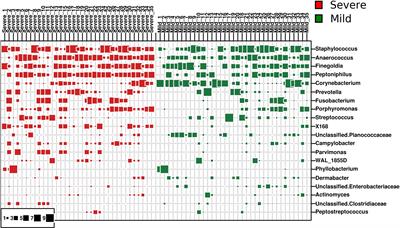ORIGINAL RESEARCH
Published on 29 Apr 2022
Exploration of the Molecular Mechanisms Underlying the Anti-Photoaging Effect of Limosilactobacillus fermentum XJC60

doi 10.3389/fcimb.2022.838060
- 3,501 views
- 18 citations
10k
Total downloads
64k
Total views and downloads
ORIGINAL RESEARCH
Published on 29 Apr 2022

ORIGINAL RESEARCH
Published on 12 Apr 2022

ORIGINAL RESEARCH
Published on 11 Feb 2022

BRIEF RESEARCH REPORT
Published on 05 Jan 2022

REVIEW
Published on 16 Dec 2021

ORIGINAL RESEARCH
Published on 03 Dec 2021
